10 minutes
Getting a Planck Keyboard
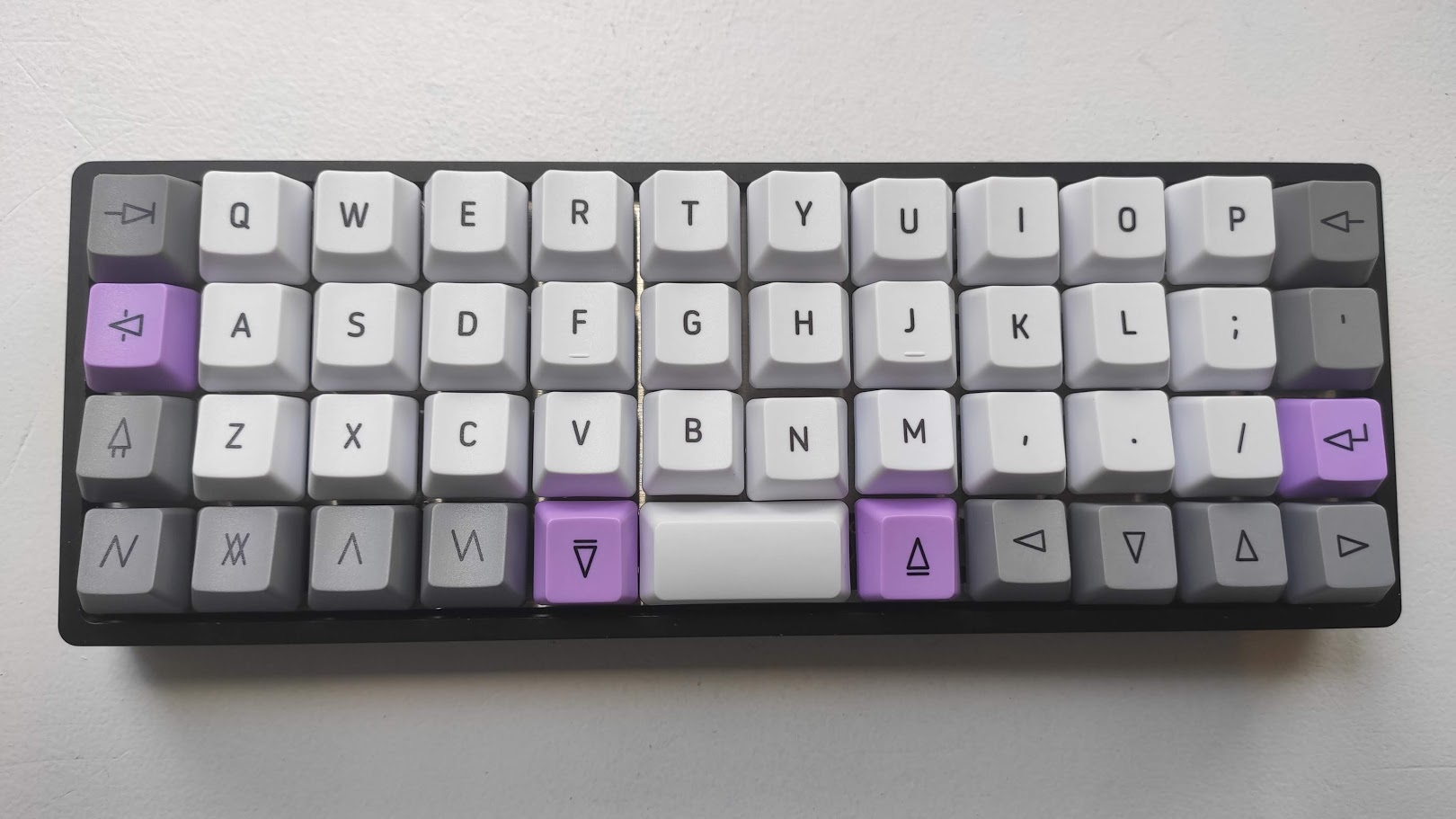
It doesn’t take much during a pandemic to generate excitement, This is the story of me purchasing an OLKB Planck keyboard on the Internet. It is not a riveting story, I doubt you will finish reading and think “Wow. That was incredible. That was intense.”.
However, let me assure you, it was an absolute roller coaster from my point of view. Since I was lucky enough to get a happy ending (spoilers!), I figured it would be amusing to tell this story.
Chapter 1 - An invitation
I’m a geek and I have geek friends. One of them is Julien who, by all accounts, perfectly encapsulates the concept of “geekiness”. I know that’s not very illustrative, I’m just writing this to see how he will react when he reads this (Hi!). Seriously though, Julien is a nice, cool dude who is as into geeky tech as I am.
Although we are good friends, our lives seldom allow us to meet in person. Thus, one fateful pre-covid day, I invited Julien (in a pub, of all places!) to discuss about two things I knew would change his life: Vim and Tmux. We had great fun: we frantically worked examples on our laptops for well over 2 hours, if my memory is to be trusted.
In passing, I told him about the benefits of using a keyboard that suits your workload. I was mainly using a Vortex Race 3 at the time and was enamoured with the ability of programming macros directly from the board (no software required!). I can’t remember if this was a prompted advice or not, but it definitely did not fall into deaf ears.
Fast-forward some weeks, and I eventually asked him if he picked up a new keyboard. His response completely caught me off-guard, because he had settled for this comically tiny keyboard:
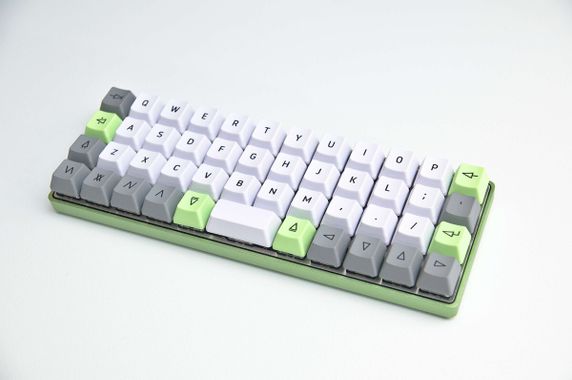
He told me about how the QMK firmware compiler allowed this board for practically unlimited customization. I remember he was quite excited about it, on the level that I was with my trusted Vortex Race 3.
I brushed it off initially, thinking: “Bah! Anyone who gets a new keyboard fall in love with it. I’m sure it’s not that good.”. Besides, I wasn’t convinced that the grid-like layout of the keyboard was good design: what was wrong with the standard staggered layout?
To tell the truth, my ego took a hit: was it possible that I had a lesser version of what my friend was having? It would have been unthinkable to betray my beloved Race 3 with a puny board such as the Planck, which initially totally sounded like a joke to me.
The idea of giving it a try lodged itself in the back of my mind. Due to covid, we weren’t going to meet anytime soon, so trying out his own board was almost out of the question. No, if I wanted to try this board, I’d have to buy it.
Chapter 2 - Budget
After weeks and months of brainwashing myself into admitting this keyboard was to be the next greatest revolution in my programming life, I finally caved and set out to purchase my own. That’s when my heart sank.
There were two options available:
- The OLKB Planck from Massdrop: 125 USD (switches not included), pre-order only
- The Planck EZ from Ergodox: 230 USD
While these prices were not out of reach, they were certainly above my budget for a board I wasn’t even sure I would enjoy. Besides, given the choice, I really wanted the Massdrop version of the board due to its metal case (the Planck EZ’s case is made out of plastic), but it was unfortunately only part of a group buy, meaning it would potentially take months to receive it even if I paid the full price.
This situation was, I hope you’ll agree, suboptimal. I had to find something else. When my brain is brainwashed into doing something, especially getting a new gadget, it’s difficult to make it stop spinning out of control.
Thus, I started looking at Reddit, Facebook Marketplace and Ebay for people willing to sell their Planck. Bad news, there weren’t many, which meant I still had to wait. And wait I did, until this listing popped up:
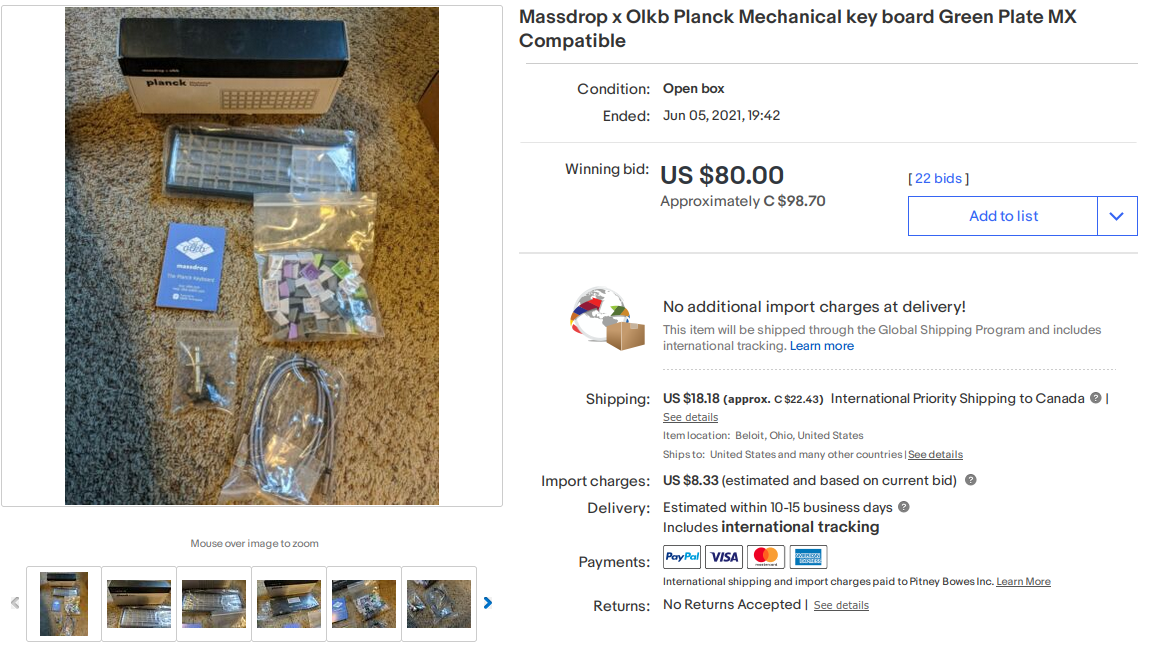
A new keyboard in an open box was as good a chance as I’d get for a deal, so I jumped on the occasion. All that remained to buy were the switches which would go underneath the keycaps. I cheaped out and went for Silent Gateron brown, which added a 35 USD to my order. Overall, the price felt fair.
Chapter 3 - Overflow
Upon clicking “buy”, I immediately started worrying about what my partner would think of me: the Planck would soon become my fourth mechanical keyboard in the home. One of them were my Vortex Race 3, which I took back from work, but the other two I had no excuses for. Thus, I started listing them for sale on the same platforms I used to shop for my Planck: Reddit, Facebook Marketplace and Ebay. For days, I got no inquiries regarding my listings.
I was devastated.
(Ok, I was only mildly annoyed, we’re still talking about keyboards…)
In a moment of divine inspiration, I thought back to the old FlashFlashRevolution community, on which I could always depend regarding my rhythm gaming and keyboard needs.
Keyboard needs…
Hey, maybe some of these guys need new keyboards to pound on!
I hastily made a thread on the FFR forums offering my keyboards for sale. They were a WASD V2 87 and a Cherry MX board 3.0. I priced them so that their total value would equal the price I paid for my Planck: the perfect trade. To my surprise, two hours later they were both sold to personal friends of mine. That’s a happy outcome I would have never predicted! It meant my much-loved boards would stay “in the family”, and I wouldn’t have to worry about them collecting dust and wasting space.
Chapter 4 - N
Riiiing
“It’s the mailman! My Planck is here!”, said almost no one ever, except yours truly.
I quickly unwrapped the box containing my Planck. Inside, it was disassembled. I was truly looking forward to the assembly part. Due to great coincidence, that day happened to be a day off for me, so I was able to take all the time I wanted to make the assembly perfect.
Except it wasn’t perfect. I messed it up, somewhat. To tell the truth, I overtightened a screw, which made it snap in half. Oops!
Luckily, one spare screw was part of the package, so if I could contain all my raw power for just one afternoon, everything would be fine. 😃
20 minutes later, the PCB is in place, and the metal plate is set as well. Time to attach the Gateron switches. The first two rows were no problem, as I was just cruising along. But then as I start working on the third row of the board, I notice something is wrong with the hole where the N key is supposed to go…
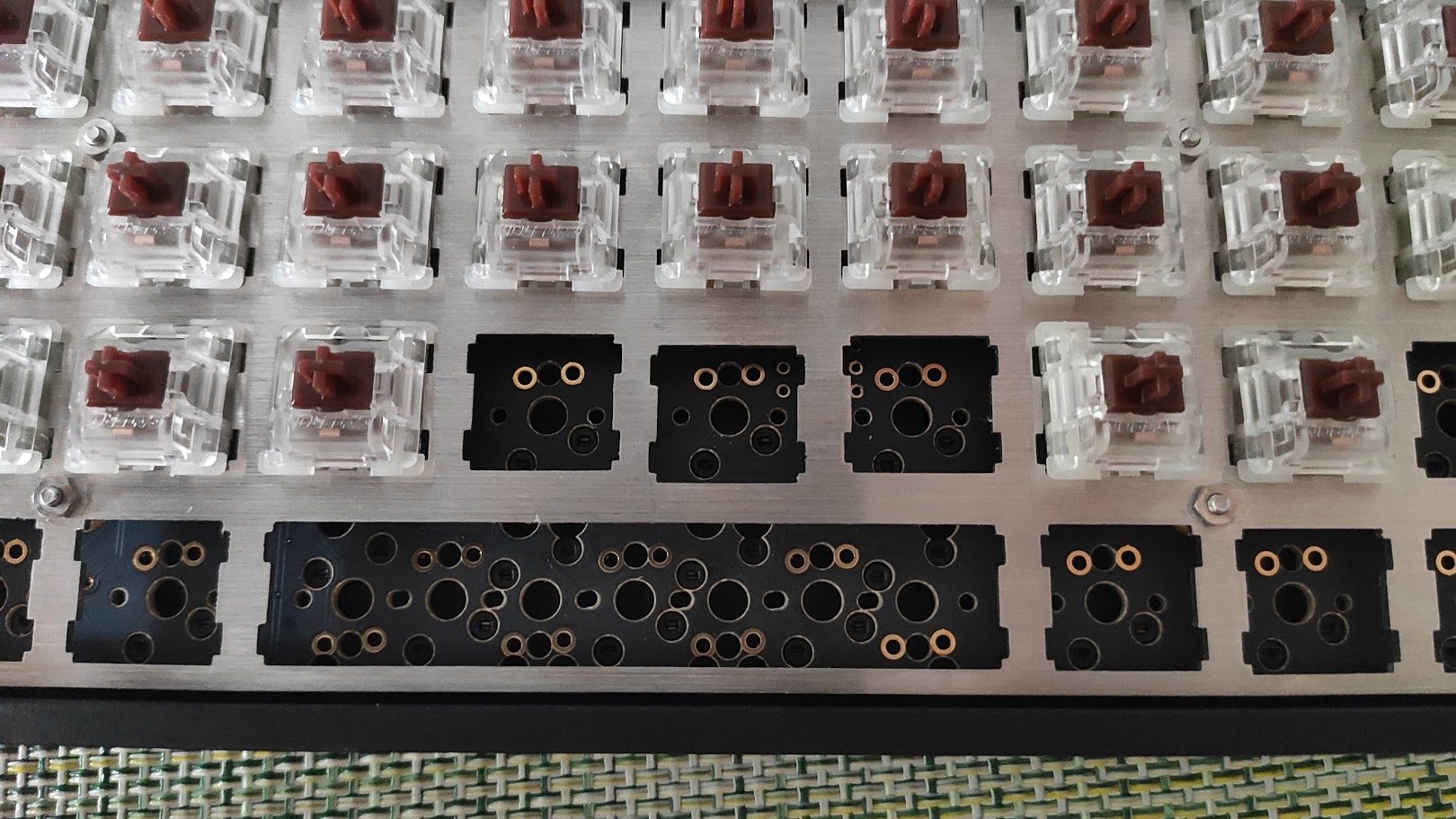
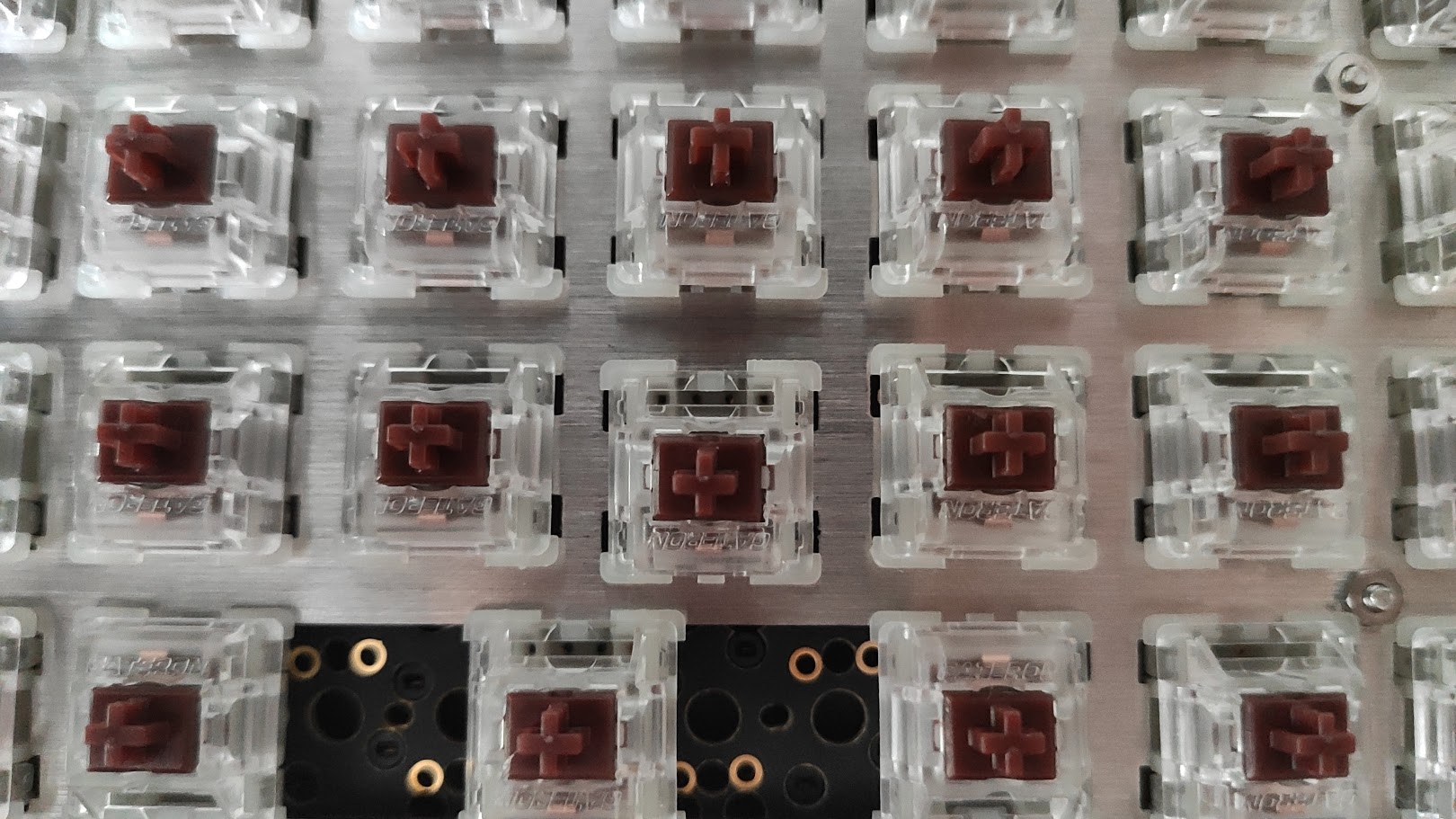
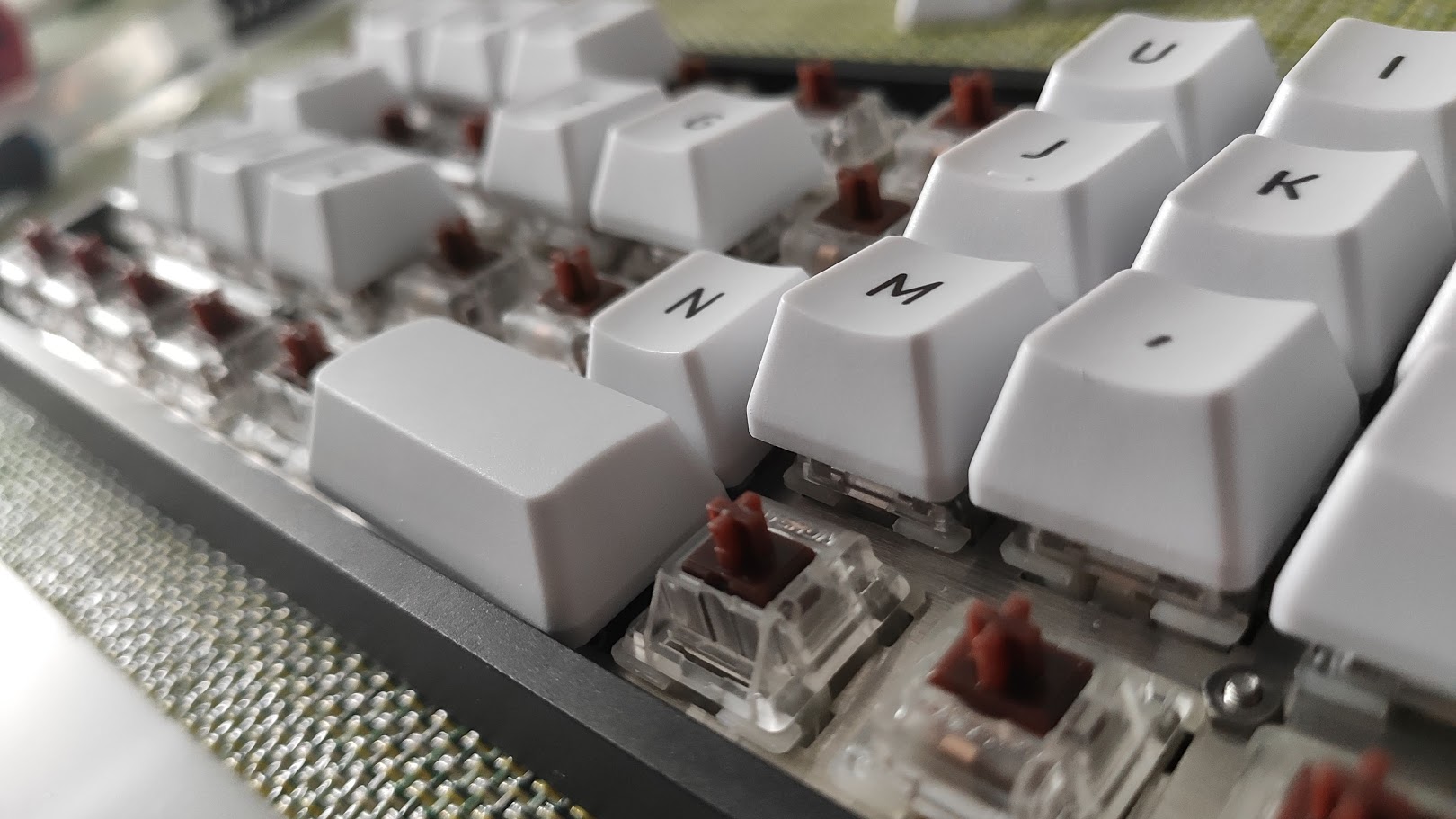
As you can see, the alignment of the N key was off by less than a millimetre, which was just enough to make it enter in contact with the space bar.
Now at that moment, for absolute real, no joke, I was legit 100% devastated. Not only had I wasted my money on this, it felt like I had sold my previous keyboards for nothing, and spent weeks waiting on a broken product. For a first-world millenial like me, this truly seemed like the worst possible outcome. The fact it all happened on an off day just made it all worse.
(I’m joking, of course, but this whole ordeal honestly stung.)
I proceeded to contacting the seller, telling them about the manufacture issue with their Planck’s metal plate. To their full credit, they offered to return the board at their own cost. I brokenheartedly agreed.
A day later, the strangest thing happened. The seller contacted me to let me know they would fully refund me even if I kept the Planck. I proceeded to give them a 5 star review, the only meaningful gesture I could do in return.
So there I was, stuck with a keyboard I couldn’t use because of some stupid plate – no, because of the stupid N key.
Chapter 5 - Fix-It Felix
When all was said and done, I had a perfectly functional keyboard, save for one fraction of one of its parts. In total, it had cost me ~35 USD, which was excellent, all things considered.
Still, I wasn’t able to type on it, until one clever Reddit user suggested that I completely bypass the metal plate and directly connect my Gateron switches into the PCB.
The suggestion wasn’t perfect, but it was good enough to get me started. Unfortunately, a fifth of the keys were so wobbly that on occasion they would completely jump out of the board as if they had a life of their own. That eventually made me want to go back to my previous Vortex Race 3, which had never failed me in such a way before.
Undeterred, I started to wonder about filing the hole in the metal place to make the switch sit closer to where it should. It just so happened that I already possessed the right tool for the job: a flat file from a Leatherman Wave+ (thanks, Santa!). An hour later, thanks to some elbow grease and determination, the deed was done. It was not a perfect job by any means, but it was just enough to allow the N and space keys to move without interfering with each other.
Alleluia!
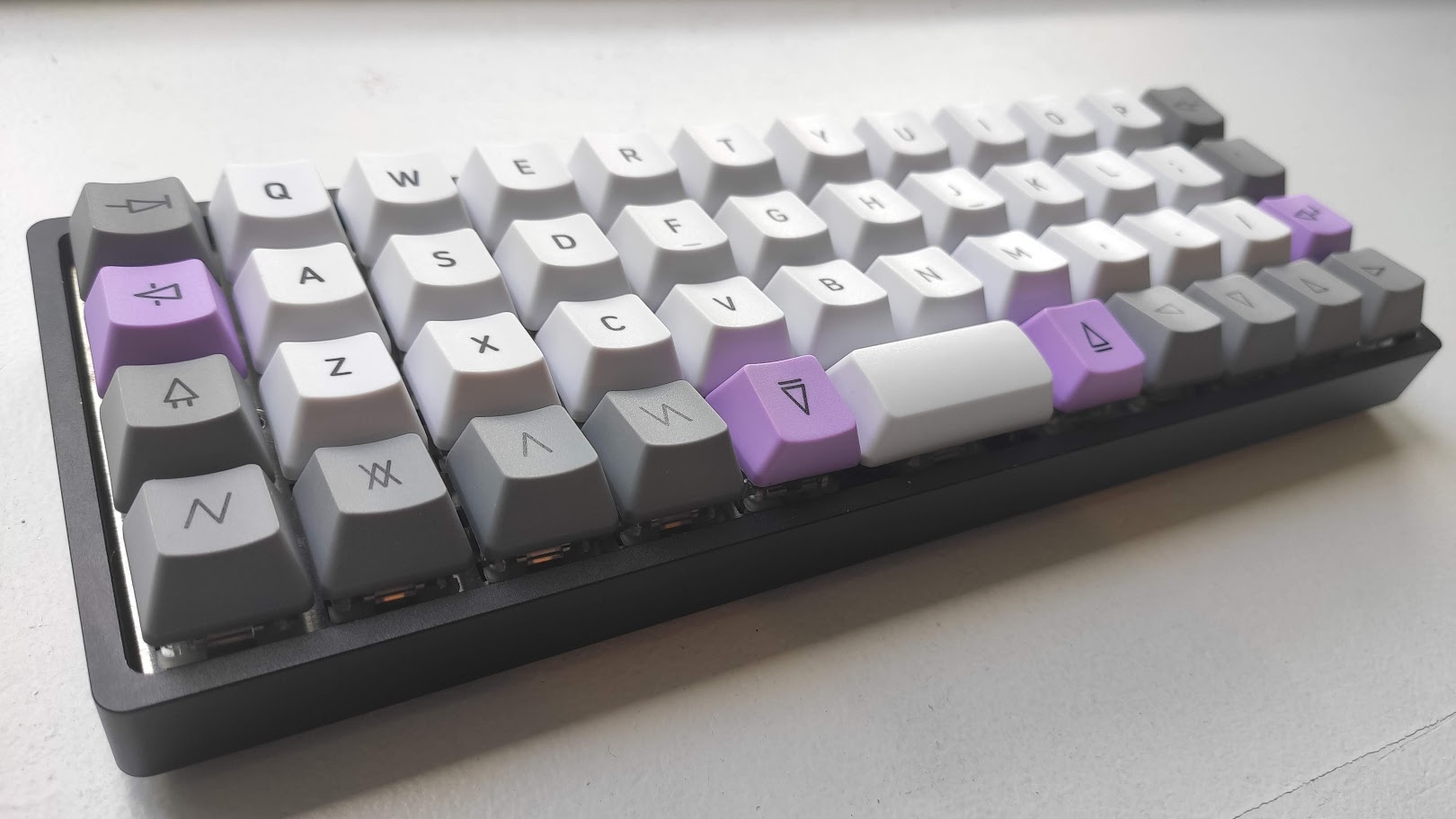
Chapter 6 - QMK Is Mindblowing
QMK (short for Quantum Mechanical Keyboard) is nothing short of mind blowing. From what I understand, it is a C++ library that allows you to compile and flash firmware on compatible keyboards (one of which is the Planck, obviously). For instance, I have edited the default keymap.c file to feature quality of life improvements that match ergonomics that I enjoy. See it here in its current form. It isn’t much, but it does the job for me!
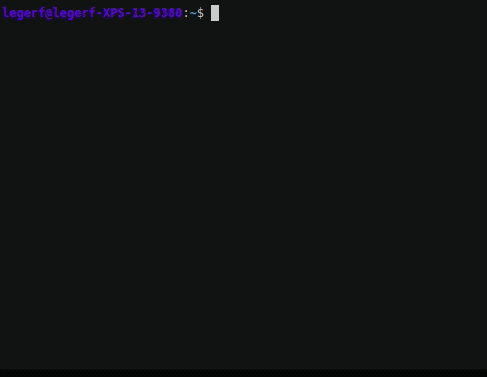
Here are some of the modifications I have made to the default Planck setup:
- Escape acts as Ctrl when held
- Backspace acts as alt when held
- Enter acts as shift when held
- Letters auto-capitalize when held
Just these minor changes alone go a long way to provide a much more comfortable typing experience. They might seem non-obvious, but when you look at where each key is situated on the board, you’ll see it makes sense.
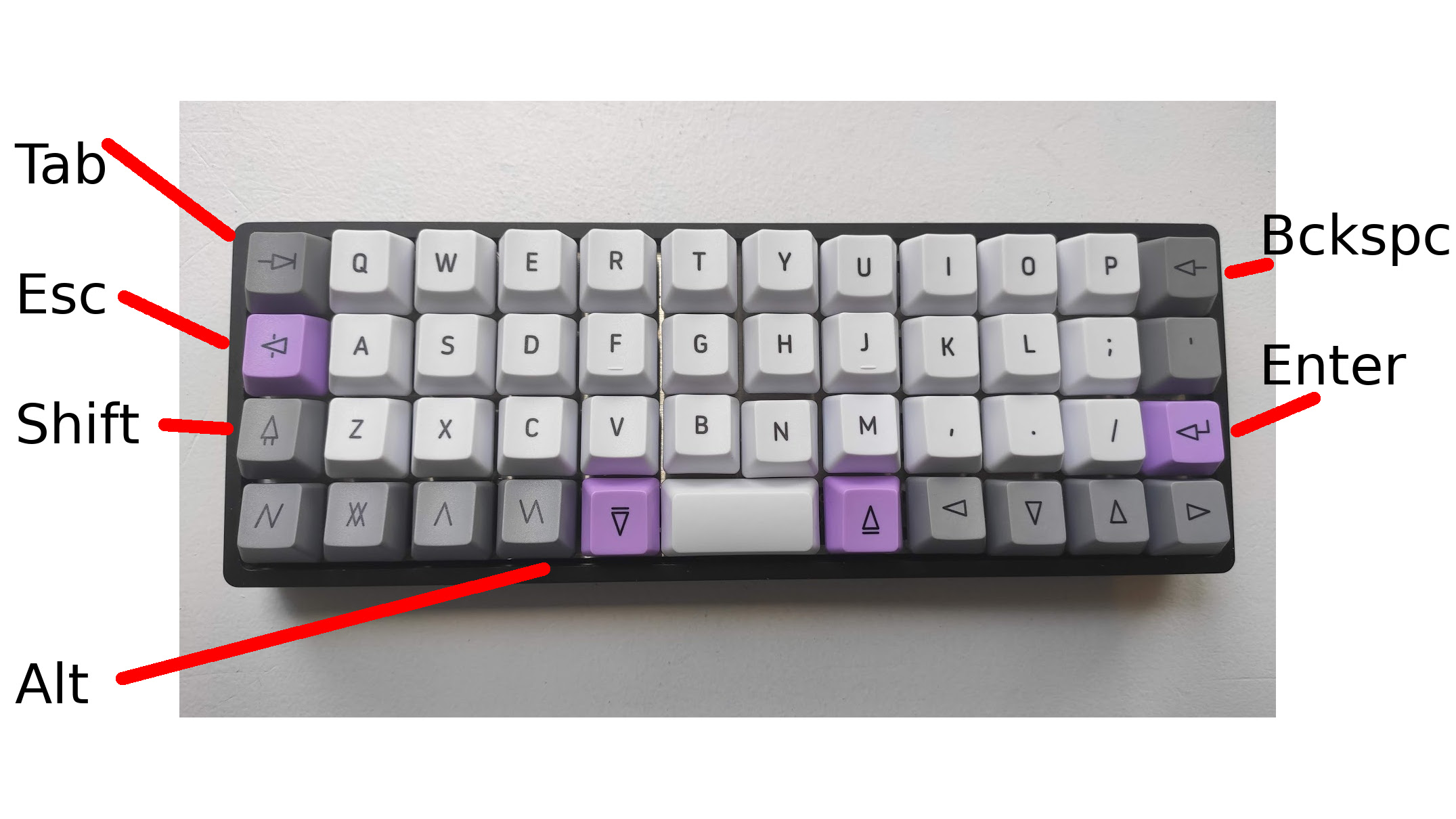
Epilogue
I have bought a defective keyboard, got it for free, managed to make it work and wrote a post about it. You have just witnessed that. What a time to be alive.
Truly, the unassuming Planck is in my opinion nothing short of a masterful design. Its default layout is not for everyone, but it gets the job done. However, when you pair it with the ability of customizing its firmware thanks to QMK, anything becomes possible. I have just scratched the surface, but I intend to make this keyboard fit me like a glove.
In this modern age, while I’d love to see everyone use a keyboard as streamlined as this one, I realize that this is the definition of a niche product. We will have to wait and see how many people adopt the new technology that is QMK. Luckily for us mere mortals, the technology is fully open source, so it will never disappear. There is even a possibility that mainstream keyboard makers might adopt it. Who knows what the future holds?
As for me, I am perfectly satisfied with my purchase so far. It delivers the experience that I expected: the ortholinear grid takes some time to get used to, but it’s just fresh enough to ensure I don’t fall asleep at the wheel. It makes every successful keystroke engaging. I now understand its purpose: it just makes it easier to cram as many keys in as little space as possible. Also, the QMK firmware is miles above what I anticipated. If you’re curious, look at their documentation and see how deep the rabbit hole goes!
I hope you found this read somewhat interesting, let me know if you have any questions regarding my experience!
2100 Words
2021-06-29 21:59
